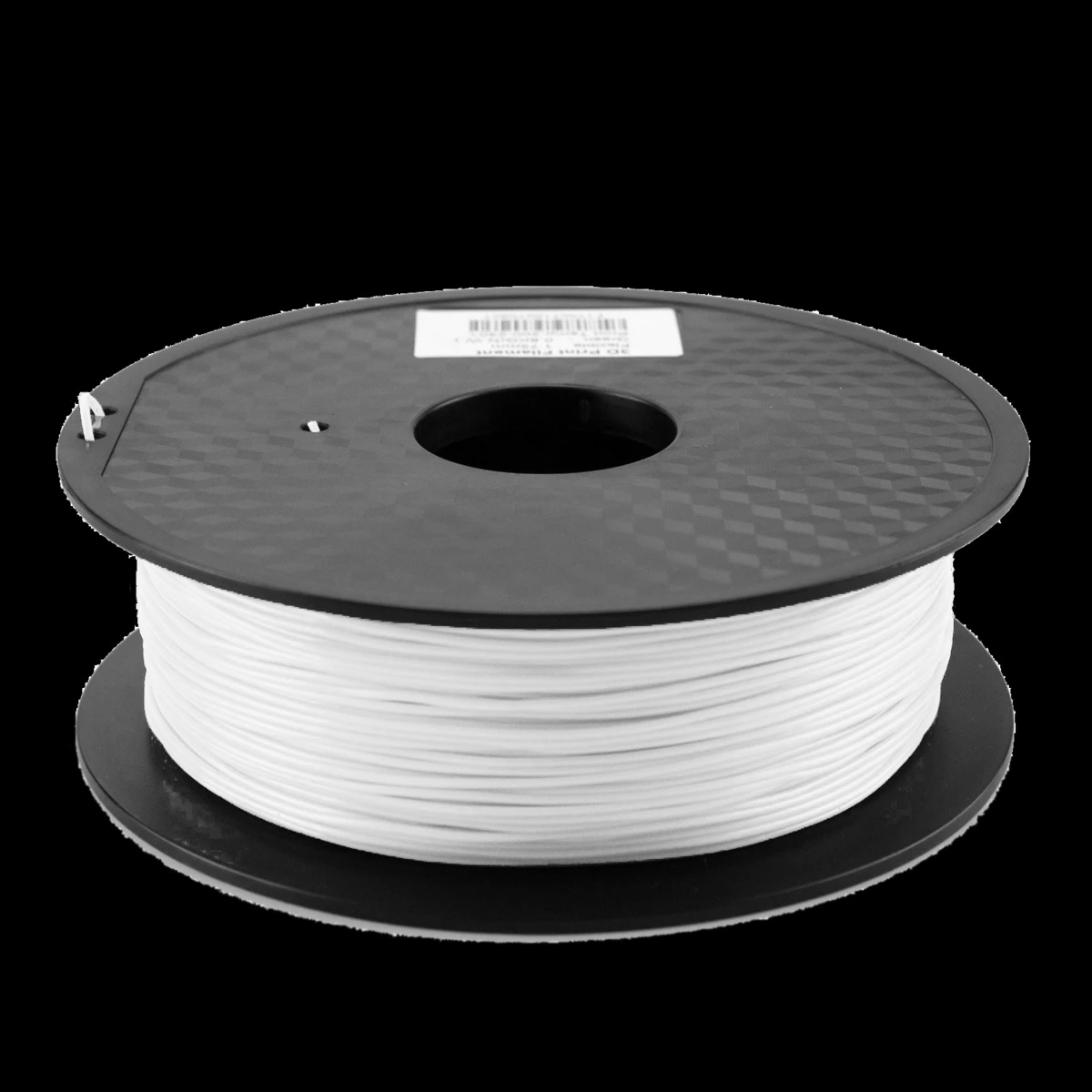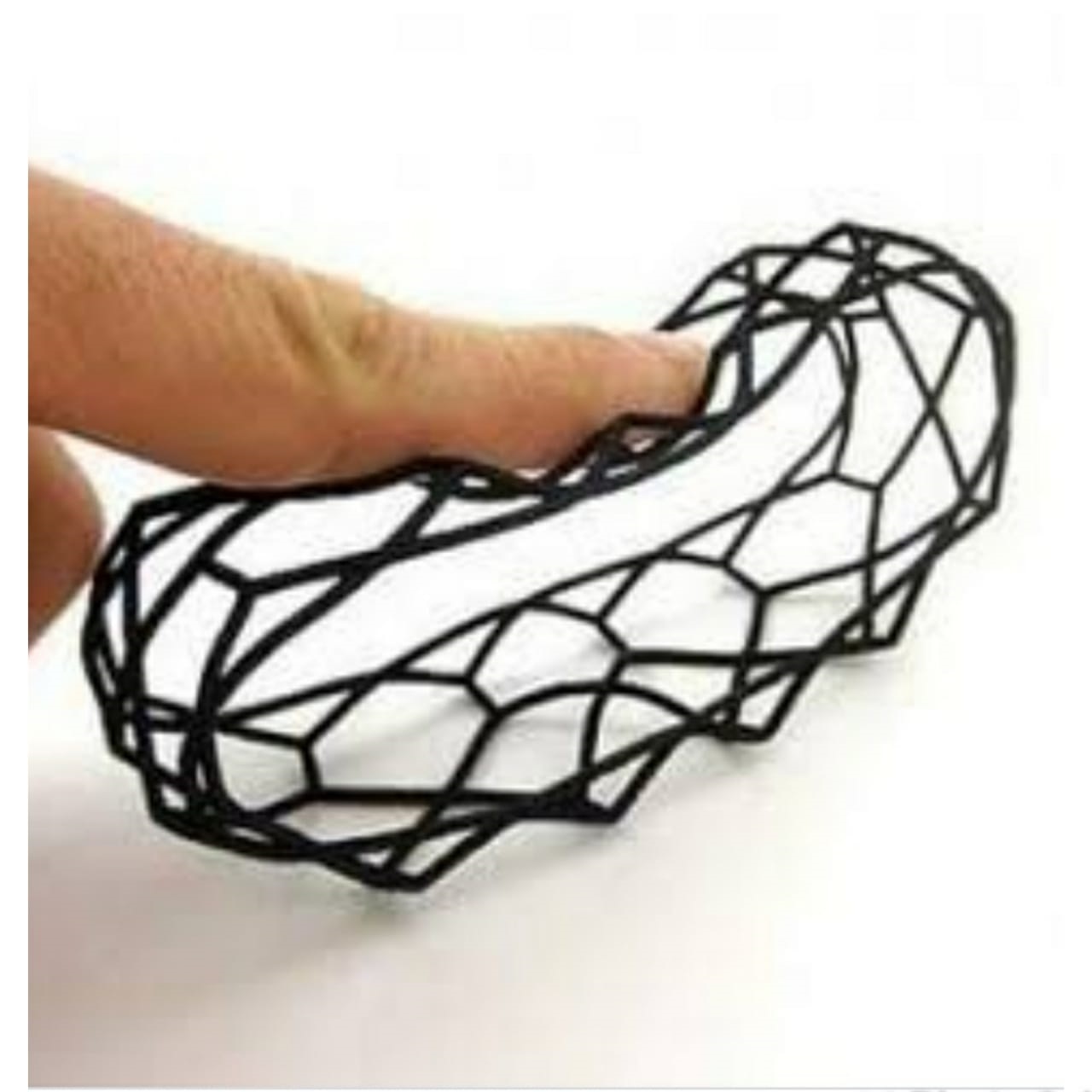TPE 3D Filament 1.75 mm(Thermoplastic Elastomer) is a flexible material. In order to achieve the best possible outcome when 3D printing with TPE material you have to optimize the feed rate. It is recommended to print at a reduced layer height of around 0.1mm to 0.2mm range. As the height is lower, a reduced amount of plastic is required. This enables the extruder to use a reduced feed rate, easing the pressure on the filament.
The best results when printing with TPE will be seen when printing with a slow and consistent speed. As TPE 3D Filament 1.75 mm has a high level of elasticity, it can mean that any sudden changes can cause a loss of control in the print speed. Fast print speeds can result in the filament compressing and will lead to a jam. Concluding: slow and steady is the best approach to take when printing TPE.
Specifications for TPE 3D Filament 1.75 mm
| Features | |
| Durability | High |
| Strength | High |
| Flexibility | Very high |
| Resistance | |
| Abrasion resistance | High |
| Chemical resistance | Medium high |
| Fatigue resistance | Extremely high |
| Water resistance | Medium |
| Temperatures | |
| Nozzle temperature | 220 – 250 °C |
| Heated bed | up to 60 °C |
Features of TPE 3D Filament 1.75 mm
Thermoplastic Elastomer has a wide range of features, making it a suitable choice for various applications when it comes to 3D printing.
Fatigue resistant
It is extremely fatigue resistant when it comes to flexing which makes it perfect for those applications where it will be required to flex. Due to its superb electrical properties, it is often found in applications where it is required to prevent electricity conduction such as wiring.
Tear resistant
Capable of heavy use, it is resistant to tear, abrasions and high impact. TPE material is also capable of withstanding temperatures as low as -30 degrees Celsius and as high as 140 degrees Celsius.
TPE filament is flexible. As a result it can be stretched to twice their length when they are at room temperature. Once the material has been stretched, it will return to its original size. For that reason it’s now being used more frequently in the 3D printing process. In fact, it is now a material that is beginning to replace traditional rubbers due to its wide range of benefits and uses. There are many different industries that use Thermoplastic Elastomer because its features offer them a number of advantages.
Medical and Healthcare
As a result of the high regulations regarding safety in this industry, TPE material is the perfect choice. Due to the fact it can be sterilized by using autoclaves and even gamma radiation. They can also be designed so that they can be biocompatible with high levels of purity and low levels of leachable substances. In some instances, they can be used in place of latex and even silicone.
Industries that use seals
There are many industries that use seals such as the marine and automotive industry. Traditionally, sealing rings have been developed using thermoset rubbers. Now TPE makes it possible to create two-component sealings that are colored and co-moulded . There is an increased level of efficiency when using TPE material, which means that seals can be produced quicker than thermoset rubbers.
Wires and Cables
TPE material is used in industries that use wire and cable, fibre optic and electrical applications. TPE offers a wide range of functionalities, it can be customized and it is perfect for engineering and prototyping.











Reviews
There are no reviews yet.